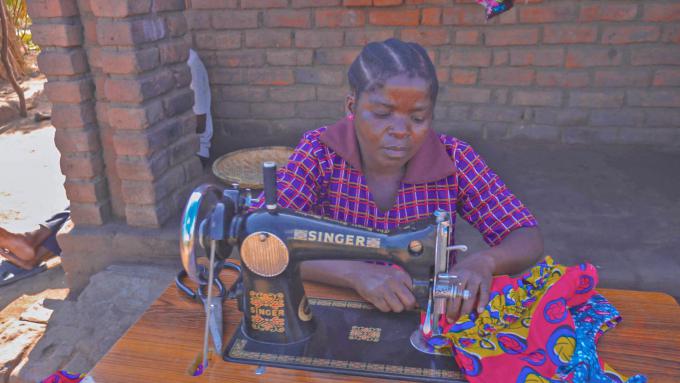Nutrition provides a way out of poverty for divorced mother of 7

Divorced with seven hungry kids to feed, 37-year-old Grace Emmanuel typified poverty in its perfect form.
Hungry and on the verge of destitution, Emmanuel soon became the community’s laughing stock and well as object of pity as fellow villagers in Chimowa Village, Mayaka in the south-eastern district of Zomba gossiped about her and empathised with her in equal measure.
“When my husband left me with the seven children, my life was a wreck. I was in extreme poverty that I couldn’t feed my family; I was devastated as I had no means to survive. I actually survived on alms from my family,” she says.
She adds: “Imagine taking care of seven kids all on my own; they have to eat three times as day. And we cannot even talk about clothing them and buying school necessities. It was all too much.”
But like they say, it is at the darkest moment when salvation strikes.
And for Emmanuel, salvation came in the form of the Resilience Economic Development (RED) which is being implemented by Save the Children Malawi with funding from Save the Children Italy.
The project objectives include increased predictable year round household income and expenditure on children, improved diets from sustainable food systems for children under five, adolescents and women, especially women in child bearing age and economic and nutrition pathways are protected from shocks and stress.
When the project started in July 2019, Emmanuel was one of the first beneficiaries and she narrates her life-changing story.
“When the RED Project came, they trained us in different skill development such us tailoring, poultry farming and nutrition. After the training, I received a sewing machine, 10 chickens and some goats as a start-up,” she explains as she puts the final touches on a niece’s dress on her sewing machine.
According to Emmanuel, the RED project also taught her how to fight malnutrition by teaching us the importance of eating all six food groups.
“With their help, I made a vegetable garden, where I source vegetables for my family. I rear goats and chicken which I can use when I need meat, and I can easily access other nutritious food by buying them at the market with the money I make from my sewing business or when selling either the goats or chicken,” she says as she shows that team around her vegetable garden where she grows a variety of vegetables as well as other cash crops.
“Right now, I am able to send my children to school and also feed them on a daily basis without bothering anyone,” she says.
But Emmanuel’s story in not a rarity in Zomba where the RED project has impacted heavily on the 4,200 of the poorest households in rural communities.
Victoria Mkandawire, who is Maternal Child and Health Coordinator for the RED Project explains that the nutrition component of the project is targeting 1,000 pregnant and lactating women, those who have children aged under five years, as well as the youth.
“The project targets agricultural production as well as nutrition consumption; what type of diets intake does the family have so that they should be healthy as well as how are they utilising their resources as they are preparing their meal for the families and the under five children,” she says.
According to Mkandawire, the project also targets the youth to enable them to have their voices heard in are advocating for nutrition.
“We are focusing on roles and policies as well as the beliefs that hinder diet intake and practices in the communities,” she says.
She notes that, as a result of the project, the area has seen a reduction of malnutrition cases.
“As we are have already tackled the nutrition part, we now want to reduce the effects of malnutrition on children, lactating and pregnant women as well as the youth. So, with the skills that they have been given, they will have a food processing session to improve ways of preparing meals instead of the ordinary eating of nsima and relish,” she says.
Mkandawire notes that they are also teaching the communities on how to use the variety of foods that they grow such as cassava and sweet potatoes which can be prepared in different ways to compliment the traditional nsima diet.
 Malawi
Malawi